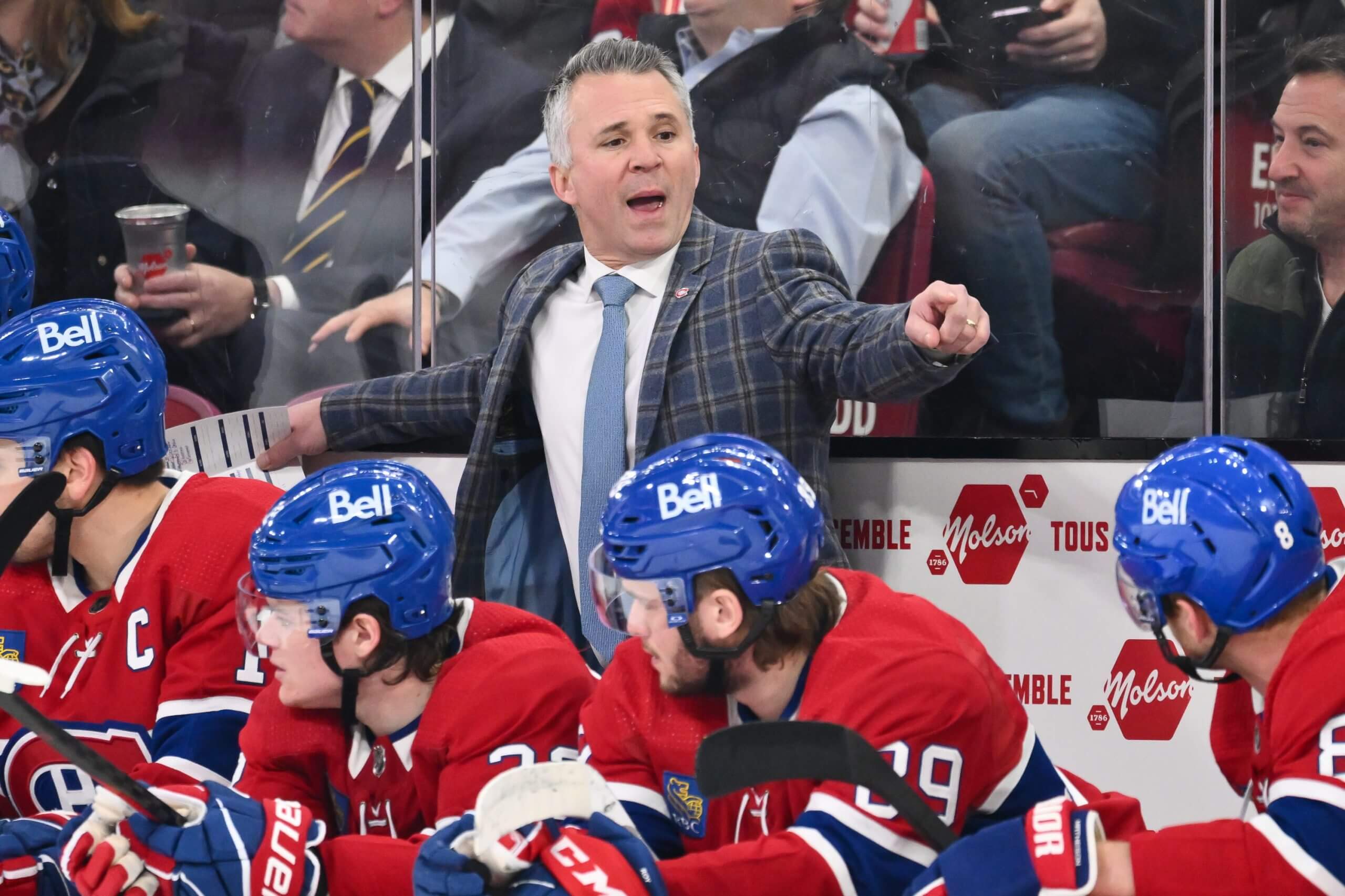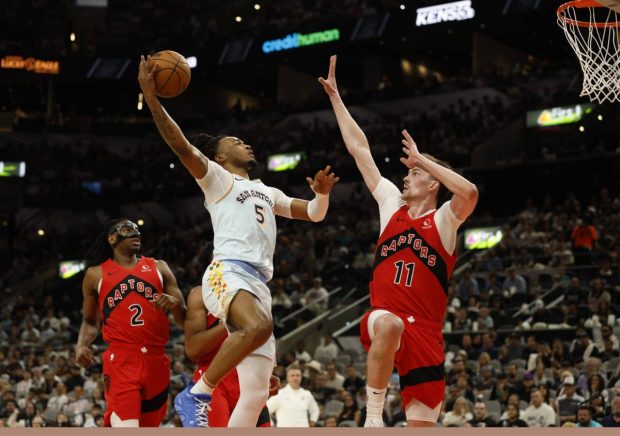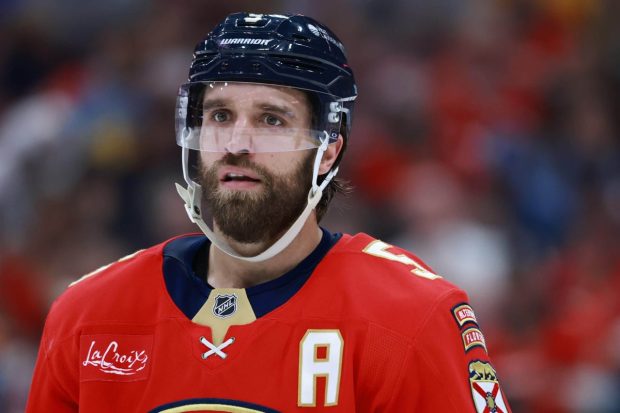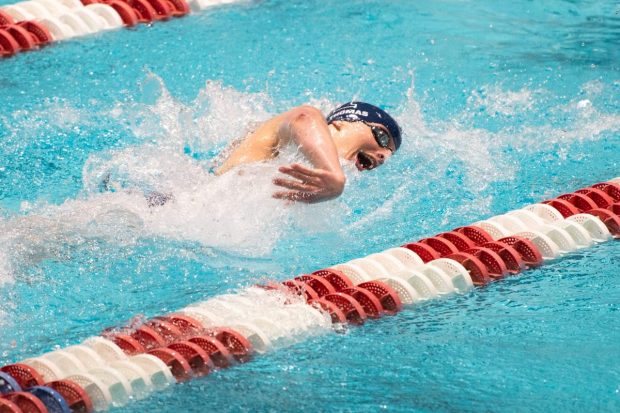
MONTREAL — The Montreal Canadiens have numerous players who have never experienced this feeling of being down 3-1 in a playoff series.
But they have all faced something similar already this season, and that is what they will be drawing on as they prepare to face the Washington Capitals on Wednesday facing elimination in Game 5 of their first-round playoff series.
Advertisement
When the Canadiens entered the break for the 4 Nations Face-off, they were written off as a potential playoff team by just about everyone but themselves. But they played their way into the playoff picture.
And now they see the need to play themselves back into this series as being similar to something they’ve already done.
“I’m sure we’ve been counted out by people outside our locker room more than once this year,” Canadiens forward Brendan Gallagher said. “This situation is going to be no different. We’ve gone through some tough stretches as a group, we’ve responded the way we needed to respond. This is no different. We’re facing the same challenge.
“The task can seem pretty daunting when you look at the big picture. But small picture, you’ve got to go on the road and win one game. You can completely flip the momentum. If you do that, you start to plant a little bit of doubt in their minds, and you go from there.”
Gallagher speaks from experience as one of six Canadiens players who erased a 3-1 series deficit against the Toronto Maple Leafs in the first round of the 2021 playoffs on their way to an appearance in the Stanley Cup Final. But their coach has also done it.
Three times.
Martin St. Louis was part of a comeback from 3-1 down with the Tampa Bay Lightning against the Pittsburgh Penguins in 2011 and two more with the New York Rangers, against the Penguins in 2014 and against Alex Ovechkin and the Washington Capitals in 2015.

Martin St. Louis knows what it takes to erase a 3-1 playoff deficit. (Minas Panagiotakis / Getty Images)
And to St. Louis, the one word Gallagher said that is the most important word in the Canadiens’ vocabulary right now is momentum.
“It’s not to say we have to win three games, no, no,” St. Louis said Monday. “We have to go get the momentum. It’s everything.”
This series has been played on the slimmest of margins. The Capitals won Game 1 in overtime and were leading Game 2 by one goal before adding an empty-netter, while games 3 and 4 were tied in the third period, including very late in the third period of Game 4.
Advertisement
“It’s a series that could be 2-2. It could be 3-1 for us. Instead, it’s 3-1 for them,” St. Louis said. “I find our young team is playing very good hockey, and it’s to keep doing that. … How can you get the momentum and keep it for a long time? We have to go get it and keep it.”
Venue changes matchup battle
In games 1 and 2 in Washington, Capitals coach Spencer Carbery dictated a hard match of Pierre-Luc Dubois’ line against Nick Suzuki’s line, and in games 3 and 4, St. Louis tried to get Suzuki’s line out against Dylan Strome’s line as much as possible.
It’s been a factor in the series because of how much damage that Suzuki line can do. Suzuki, Cole Caufield and Juraj Slafkovský have combined to score seven goals in four games while the rest of the team has combined to score four. It’s pretty clear what provides Carbery with the best path to victory.
In Game 4, despite not having the last change, Carbery was able to get his desired matchup at times due to manipulating circumstances.
“There were a couple of times where I see Caufield, so one guy comes on from that line, (then there’s a) stoppage, and then I can just go Dubois,” Carbery said after Game 4. “And then Caufield has to go off the ice, or he’s got to choose to go with Suzuki and Slafkovský. These are moments in the cat and mouse of two coaches trying to figure out what you want to do. Do you want to play into that and play Suzuki against Dubois? Or are you going to let Suzuki sit another couple of rotations, and then I have to figure out a way around that?
“We did get into some situations that weren’t ideal for us, but I thought our guys managed it well.”
Now it is up to St. Louis to play that role and try to disrupt what Carbery is doing more than he did in the first two games in Washington.
“For the majority (of the series), at home, you’ve gotten what you wanted,” St. Louis said. “He’s going to get that opportunity to get that at home. Am I going to try to juggle that and make it hard on him? Yeah, that’s my job.”
Advertisement
Cooler heads on Monday
St. Louis and some of his players were pretty hot at the officiating after Game 4, feeling there was some embellishment from the Capitals and that Tom Wilson deserved a penalty for his thunderous hit on Alexandre Carrier that knocked him out of the game just before the Capitals tied the score in the third period.
Gallagher doesn’t think the Canadiens’ frustration with the officiating has become a distraction.
“I think for the most part we’ve handled it well,” Gallagher said. “It hasn’t gone our way, that goes without saying. But that’s for them to control. There’s certain things that the league can control, and have faith that’ll start to flip and they’ll take care of it. But for us players, we’ve just got to focus on our job.”
As for St. Louis, who was still emotional more than 30 minutes after Game 4 when he spoke to the media, he admitted Monday that a good night’s sleep had gotten him back to a more level head space.
“It was fresh. It’s emotional,” he said. “Your team played well and you’re on the wrong side of it. Your guys go to war and come out of it banged up. For sure, as a coach, it sucks to see that. But we woke up this morning and the emotions are back to being in the right place. Now we keep going.
“I’m happy with how we’re pushing the Capitals, how we’re playing against them. We have to keep going, have the right intentions and attitude and everything to make this a very long series.”
St. Louis defends timing of his goalie pull
For some reason, some people seemed to think St. Louis pulled his goalie too early at the end of Game 4. There was 2:47 left on the clock and the Canadiens had an offensive zone draw coming off a TV timeout.
“I need a goal, whether I get it at 32 seconds left or 2 minutes and 32 seconds left, you need a goal,” St. Louis said. “An offensive zone draw, still have a timeout, so I have the potential to have the guys I want on the ice for the rest of the game if I really need to. You might never get another offensive zone faceoff. And then it’s hard. Like, if you don’t pull (the goalie) now, who’s going on the ice? Are we going to be able to get organized? There might not be another whistle.”
Advertisement
Seems like a reasonable argument. St. Louis added that having a sixth player on the ice helps with that faceoff because even if it’s lost, the numerical advantage should make it easier to recover the puck and also makes it unlikely the opposing team will be able to exit the zone with possession.
There were mistakes made by the Canadiens in that game. This was not one of them.
Lars Eller’s perspective on embracing his NHL identity
Back when Lars Eller was playing for the Canadiens, he was still a young player who had a firm idea of who he wanted to be in the NHL. He was going to be an offensive player. He was a first-round draft pick, acquired in the high-profile trade that sent Jaroslav Halak to the St. Louis Blues right after Halak had led the Canadiens back from a 3-1 series deficit against the Capitals in the 2010 playoffs.
Eller was going to be an offensive, top-six player in the NHL. He was sure of it.
“At that time, I suppose it was a part of the journey to getting here,” Eller said earlier in the series. “I hadn’t established myself, and I was trying to establish a certain identity and I was moved around a lot (in the lineup). But the lineup changed a lot throughout those years, it wasn’t just me. You were just a piece in a bigger puzzle. I was able to work through that and be a player, and there were times I got the best version out of me, and there were other times I wasn’t able to be the best version of myself.
“I think when I got here it was like, you’re going to be a third, but I was playing behind (Evgeny) Kuznetsov and (Nicklas) Bäckström, so it was easy to accept that was going to be the case. It was just easy to fit in and accept it and try to make the best of that.”
Eller went on to become one of the best third-line centres in the NHL, a Stanley Cup champion who crossed the 1,100-game mark this season. He’s had an excellent, successful career even if it didn’t work out quite like he thought it would when he was a young player in Montreal.
Advertisement
So, if he had something to tell that younger version of Eller with the wisdom he has acquired over all these years, what would it be?
“I think I would tell him to not be too hard on himself and don’t forget to enjoy the game,” Eller said after giving it a lot of thought. “I think if I look back to then and I think of what would the kid say to the professional then, it would be don’t be so hard on yourself. That would be the main message.
“I think all players, before they come to the NHL, almost every single player is used to being the guy. That’s what they’ve been before, for their whole life. So you strive to become that and that’s what you set out as a goal. But the goal inhibits and puts too much weight on you and drags you down and takes the fun out of it. When you take the joy out of it and it becomes more about pride or expectations or thoughts, you’re thinking too far ahead or too far back, you don’t stay in the present. Certainly, I was hurting myself at times.”
Why this trip down memory lane with Eller? Because almost all of it applies to Alex Newhook, a first-round pick acquired via trade as a young player who still sees himself as a top-six, offensive player but who could have a very long and successful career as a quality third-line player if he digs into that identity.
Newhook needs only to look across the ice to see what that might look like.
(Top photo: Minas Panagiotakis / Getty Images)
This news was originally published on this post .










Be the first to leave a comment